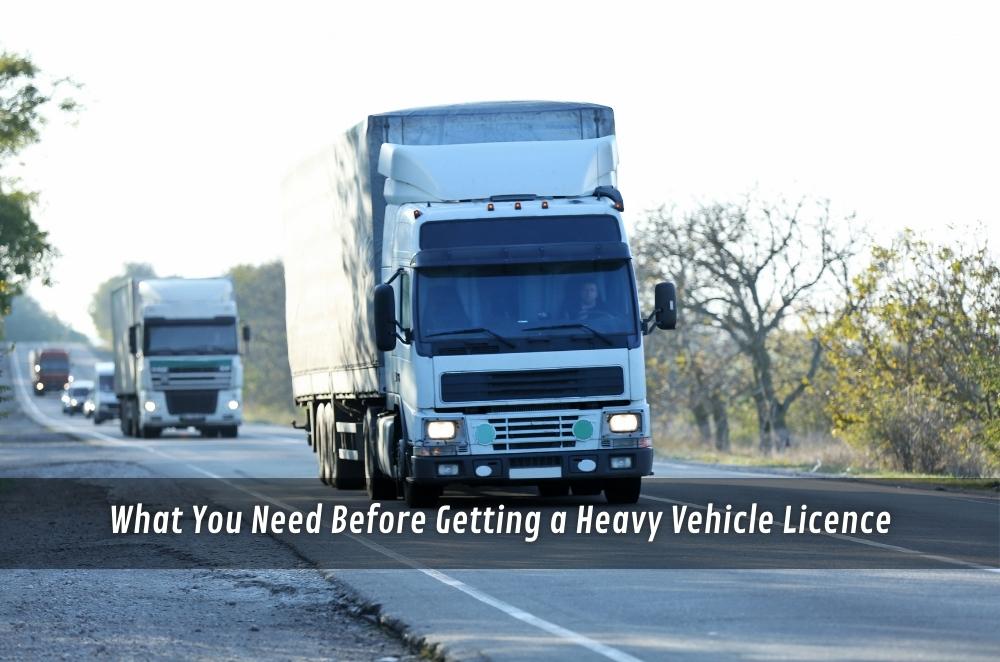What You Need Before Getting a Heavy Vehicle Licence

Most people see a big prime mover on the freeway and think, “That looks tough to handle.” And they’re right. Driving something that size isn’t like hopping from a car into a ute—it’s a whole different game. For anyone moving up from smaller trucks, enrolling in an HC licence training course is the first step that makes the jump possible.
When I stood beside my first semi-trailer, I remember thinking, “This isn’t just another truck—it’s basically two vehicles bolted together.” The length, the turning circle, the sheer weight of it. My HR licence suddenly felt like a beginner’s ticket. That’s where proper training came in—it turned nerves into a bit of confidence and gave me the tools to handle something built for serious work.
The licence itself isn’t just paperwork; it’s a system built to prove you’re ready to take on more responsibility and keep the roads safer for everyone.
Meeting the requirements for a heavy vehicle licence
Before you can even think about lessons, you’ve got to clear a few basics. On paper, it looks simple. In reality, these checks are what separate someone who’s just curious from someone who’s serious. The process of getting a heavy vehicle licence is more about proving you’re fit to be trusted with tonnes of metal and momentum.
-
You need to have held your existing licence long enough—there’s no fast track.
-
A medical is mandatory, and not the quick “read this chart” type. They check eyesight, reflexes, and general health.
-
A theory component covers rules specific to larger vehicles.
-
Practical assessments make sure you can do more than just keep it between the lines.
I’ll never forget sitting in the doctor’s office, sweating over the eye test. It’s strange—driving long distances never bothered me, but staring at tiny letters across a room suddenly did. When the doc nodded and said “all good,” I realised just how much rides on something as basic as vision.
Preparing for your licence test
Training days feel like a mix of school and real life. The instructor shows you the ropes, but the truck itself does most of the teaching. You start to learn that a semi doesn’t behave like any rigid you’ve driven before.
Some of the areas that catch people out include:
-
Reversing trailers without folding them into a jackknife.
-
Changing gears smoothly when you’re hauling weight uphill.
-
Coupling and uncoupling trailers under pressure.
-
Defensive driving—thinking three steps ahead because stopping distance is never on your side.
During my first reversing session, I managed to fold the trailer in half more times than I’d like to admit. My instructor just leaned against the guardrail, arms crossed, grinning. He said, “Good—better you stuff it up here than on a site.” It stung a bit, but he was right. Those mistakes stuck with me, and I haven’t repeated them on the road since.
For anyone serious about passing, digging into the HC licence test preparation can make the difference between just scraping through and walking in with confidence. But don’t expect a cheat sheet—the only way to really get it is by grinding out those hours behind the wheel.
Life on the road after the licence
Passing the test isn’t the end of the story—it’s really the beginning. Once you’re officially holding that new class, the road teaches you lessons no trainer can fully prepare you for.
The first few months are when reality sets in. You notice how fatigue creeps in quicker on long hauls, how crosswinds push against a loaded trailer, how something as simple as merging onto a freeway takes longer planning.
I remember one of my earliest solo jobs, pulling a loaded semi through regional NSW. Every crest and descent forced me to rethink my braking points. On one stretch, a car darted into my lane too close. In a rig, I could’ve stopped. With the semi, I had to anticipate, ease off early, and let the gap widen. It was a wake-up call that no classroom could give me.
For new drivers, the challenge isn’t just technical—it’s mental. Staying patient, alert, and respectful of the machine is what separates a licence holder from a professional driver. And that part of the journey only begins after you’ve earned the qualification.
Upgrading your licence step by step
Eventually, you’ve got to sit the test. By then, the nerves are less about driving and more about being watched. The assessor doesn’t say much. They just scribble notes while you run through safety checks, mirror use, gear changes, all of it. It feels like every blink is being judged.
What threw me wasn’t the driving—it was remembering all the little checks. Look over your shoulder, handbrake before you climb out, and don’t forget the coupling pin inspection. Things you normally do without thinking suddenly feel like a spotlight is on them.
For drivers already holding an MR or HR licence, there are clear steps to upgrade to an HC licence, and each one builds on the skills you already have. By the time you finish the process, the card in your wallet means more than just a new licence class—it represents the fact you can handle the weight, length, and responsibility of a heavy combination vehicle with confidence.
Final thoughts
The HC licence isn’t about ticking boxes—it’s about taking on a responsibility that changes how you drive forever. Each stage—medical, training, assessment—isn’t there to slow you down. It’s there to shape you into someone who can be trusted with a machine that’s bigger and heavier than most people can imagine.
I’ll never forget the first time I took an HC out of the yard after passing. Empty trailer, middle of the day, no real pressure. But when I hit the brakes coming down a hill, it felt completely different to my HR. The stopping distance stretched out in a way that made me instantly cautious. That was the lesson the licence doesn’t spell out: the road will always remind you just how much responsibility you’re carrying.
- Vibnix Blog
- Politics
- News
- Liberia News
- Entertainment
- Technology
- EĞİTİM BİLGİLERİ
- Art
- Causes
- Crafts
- Dance
- Drinks
- Film
- Fitness
- Food
- Oyunlar
- Gardening
- Health
- Home
- Literature
- Music
- Networking
- Other
- Party
- Religion
- Shopping
- Sports
- Theater
- Wellness



